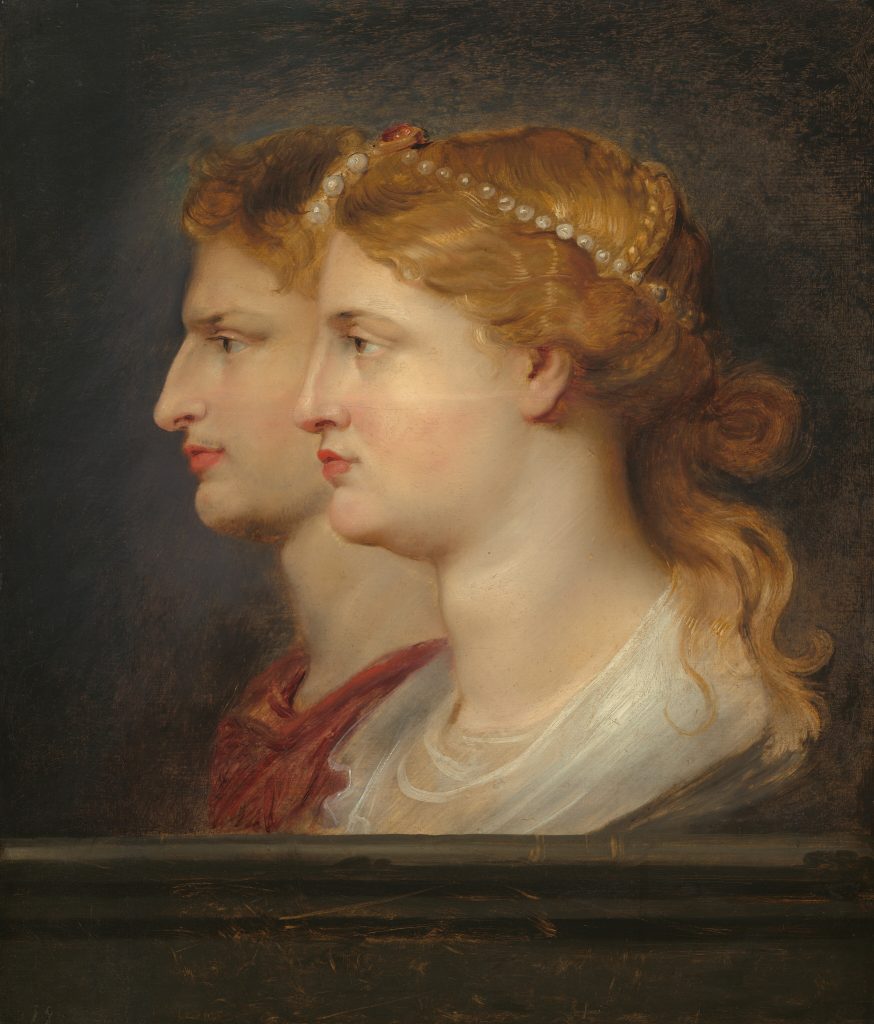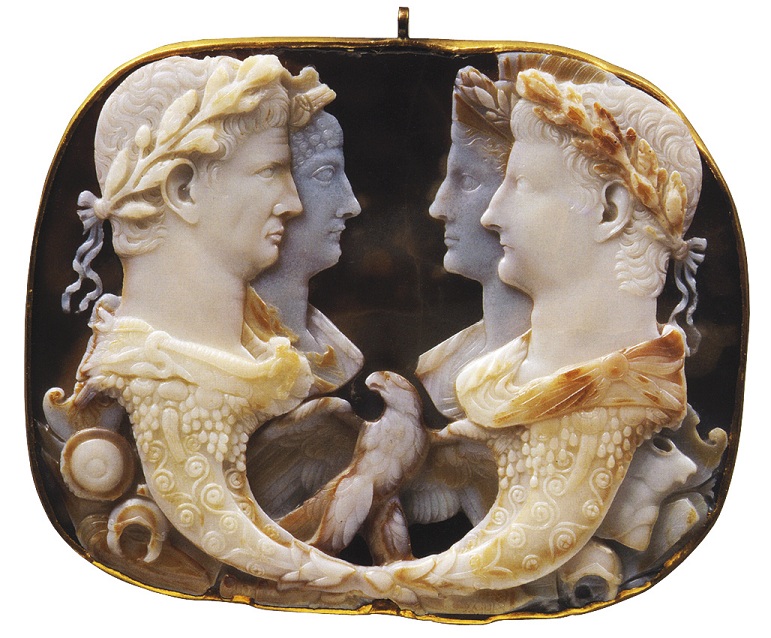How did you guys feel about history class in school? I love history, but in my school history class was often filled with dates and dry accounts of who took over what country in what war. History is so much more than that: it’s filled with complex characters, drama, heartbreak, scheming, betrayal, love and sacrifice – in short, it’s filled with great stories.
Sadly, you have to do a bit of digging to get to those juicy bits, but when you do, you find a endless treasure trove of inspiration for really cool plots. George R. R. Martin famously borrowed a lot of the events in the ever popular A Song of Ice and Fire (popularized as Game of Thrones) from the period in english history called the Wars of the Roses, though after quite a bit of research I think it’s safe to say his inspirations came from many different eras in time. And he’s not alone – many authors, especially those dabbling in fantasy or science fiction love to look back at what came before to inspire their stories.
So, every once in a while I’ll tell you about a person or event in history that could be used to inspire your novels or games.
This time, we’ll take a look at Agrippina the Younger.
Agrippina was the sister of one mad emperor and the mother of another. There were numerous attempts on her life, and she herself has been accused of conspiring to murder two emperors. She spent part of her life in exile, ended up marrying her own uncle and did everything for the son who would later have her killed. Though she rarely gets credit for it, she was in truth the first real empress of Rome.
But let’s tell her story from the beginning.
Early Life
Julia Agrippina was born around 15 AD in a military camp in what is now Cologne, Germany. Her parents were two of the most beloved and famous people in the Roman Empire and she had two sisters and three brothers, though by the time she turned 20 half her family would be dead – rumored to have been directly or indirectly killed by the emperor Tiberius.
It began with her father who died when she was four; it is unclear whether this was caused by sickness or poisoning, but Agrippina’s mother was certain of Emperor Tiberius’ involvement – he had always seen her husband as a threat for being so popular with the army. The emperor, of course, didn’t like hearing such accusations, so the mother and two of Agrippina’s brothers were swiftly forced into exile or sent to prison. Conveniently for Tiberius, they soon died from (forced) starvation – it’s said that one of her brothers was reduced to chewing on his own bed stuffing right before he died.
Her only remaining brother – a boy just a few years older than her called Caligula – was sent to stay with the emperor on Capri. There he lived an uneasy existence for six years, having to play along with the emperor’s whims to ensure the survival of himself and his three younger sisters. He must have known that any one mistake could have him or his sisters thrown into prison or killed outright.
When Agrippina turned 13 the emperor arranged for her to marry her much older cousin – a man known for having killed a man who didn’t get drunk enough for his liking, ripping the eye out of someone who criticized him as well as swindling money and cheating banks. A few years later she gave birth to their only child, Nero.
Sister of the Emperor
Eventually Emperor Tiberius died and Agrippina’s young brother Caligula was chosen to replace him, having successfully survived the six years he lived on the emperor’s island. The first few months of his reign was peaceful; people were tired of Tiberius and thought the son of his rival would do a much better job at being Emperor. Caligula in turn was determined to restore his family’s glory and showered Agrippina and his other two sisters with honours; some even say he treated his sisters like they were his wives, with middle sister Drusilla the clear favourite.
This didn’t last long, though. After just about six months as emperor Caligula got severely ill – many expected he’d die – and after he recovered he was a changed man. He became extremely paranoid and started executing those closest to him or forcing them into exile, certain he’d been poisoned. A few months later his beloved sister Drusilla died of a fever, and on her death Caligula declared her a deity and made it a crime to laugh, bathe or dine with family while he mourned her loss. After that, few people loved him. Today Caligula’s rule is remembered for things like him making his horse a statesman, turning the palace into a brothel, having himself worshipped as a living god and throwing an entire section of spectators into the arena to be eaten by lions because he was bored.
Perhaps Agrippina and her remaining sister thought enough was enough, for they were soon accused of being involved in a coup called the Plot of Three Daggers, in which they were to murder Caligula and put Drusilla’s widower husband on the throne instead. Drusilla’s husband was swiftly executed and Agrippina and her sister forced into exile.
Now the only family member to remain by Caligula’s side was his and Agrippina’s uncle Claudius, whom he only kept close as a laughing stock to mock in front of his subjects. So much for restoring the family glory!
Wife of the Emperor
After four years of increasingly terrible decisions, the people of Rome finally had enough and Caligula was murdered. Uncle Claudius, now famed for being Caligula’s laughing stock, was put on the throne and tasked with bringing back order in the empire. He released Agrippina from exile – during which her husband had died – and back in Rome she quickly found a new, richer man who conveniently died soon after naming her his heir, leaving her a wealthy and well-connected widow (I’m not saying she poisoned him, but it has certainly been implied).
At this point Agrippina’s son Nero was the only direct male descendant of the legendary first emperor Augustus, making him a top candidate for becoming emperor after Claudius. Uncle Claudius had a son as well, but he was sickly and didn’t have quite the same pedigree. Understandably Claudius’ wife Messalina saw Nero as a threat who might try to usurp the throne in the future and attempted to have him assassinated – when it failed Agrippina became increasingly popular while Messalina fell in favour, until a series of further mistakes saw her executed for treason.
Agrippina saw this as her chance to further advance the status of herself and her son. Though Claudius swore he wouldn’t take another wife, she soon changed his mind. He legalized incest so they could marry, obediently adopted her son Nero and made him his heir, and then conveniently died eating a poisoned mushroom.
Mother of the Emperor
Now, we’ll never know for certain if Agrippina poisoned the emperor’s mushroom or if he simply suffocated on it. Whatever the case, Agrippina went from consort to regent, ruling the empire while Nero was underage.
These years were, to her credit, peaceful and successful – but perhaps she lost track of her son as she spent her time ruling the empire. For as Nero grew older, he wanted more and more power for himself and started telling Agrippina to behave more like a woman rather than an emperor. He disliked having her present at political events and made his point by having her publicly humiliated in front of foreign delegations. When he tried to force her away from court, she threatened to turn her back on him and support Claudius sickly old son with Messalina as emperor instead. Knowing his mother’s support would make the boy a real threat, Nero had him poisoned to death soon after.
Agrippina had now fully lost control over her son, and though she was still loved throughout the empire, Nero wanted her gone once and for all.
He began by trying to poison her – after all, that had worked on his rival – but Agrippina would not go down so easily. Rumours say she took antidotes daily to avoid any poisoning attempts from her son (or others), so no poison worked on her.
He got his next idea from watching a spectacle at the arena in which they used a boat that was built to collapse and throw its passengers into the water (where they presumably had to fight crocodiles or something equally awful, knowing what the arenas looked like back then). Nero had a similar boat built, invited his mother to a great feast where he got her drunk, then sent her and her handmaidens home across the water in his freshly built-to-collapse boat. As the boat collapsed and they landed in the waters, one of the handmaidens that didn’t know how to swim called for help, claiming she was Agrippina. She must have thought that would make the onlookers in a nearby boat help her – instead they hit her with oars and left her to drown, being sent by Nero to make sure things went as planned. Agrippina herself kept silent. She had become an expert swimmer during her years of exile (spent on a small island) and swam ashore, surviving one more day.
In the end, Nero settled for regular murder and paid three men to stab his mother to death in her own home. Needless to say, he was not a popular emperor and what little success he had in his rule ended abruptly after his mother’s death.
Whether you paint her as a hero or a villain, there are certainly few who have lived such complex or eventful lives as Julia Agrippina. I can wholeheartedly recommend looking into the life of her or any of the other historical figures mentioned here – sometimes those dusty old history books really are more dramatic than fiction.




